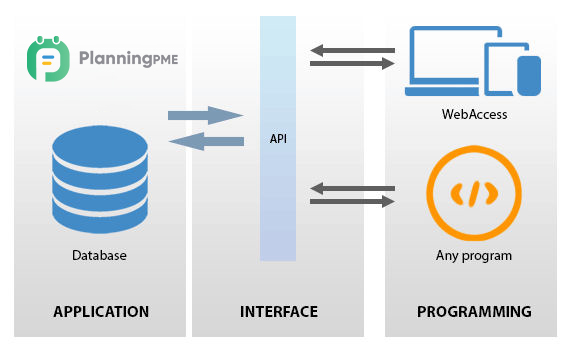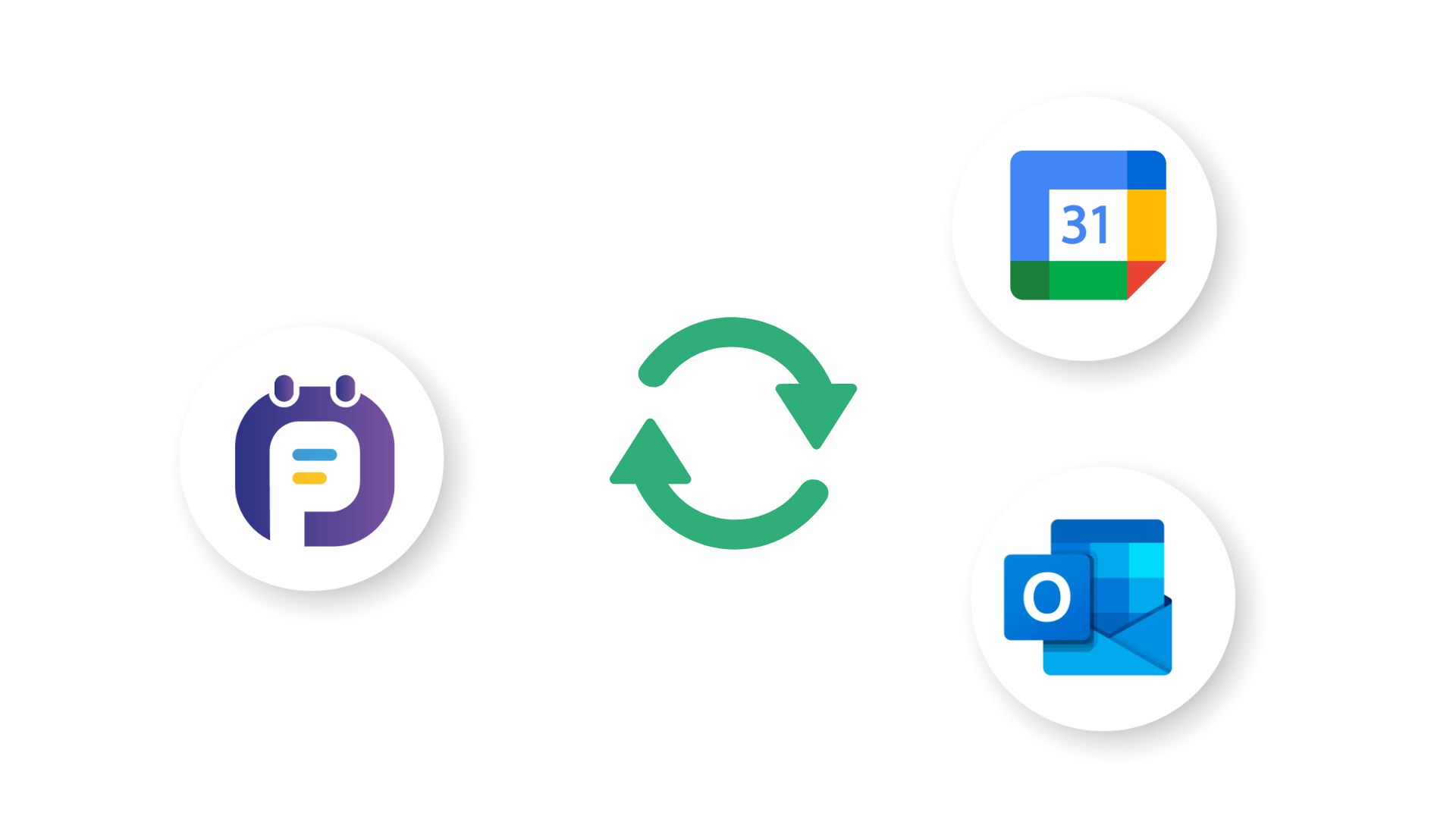Optimisation of machine tools and resource management
- What problems might you encounter and how can PlanningPME help you?
- How has remote working changed your scheduling work in your departments?
- What should you choose between a software and a web application?
- Where should data be hosted?
- What are the advantages of synchronising your customers, machines and leaves with PlanningPME’s API?
- Why synchronise your resource schedule with Outlook or Google Calendar?
Introduction
Your company sells machine tools, milling machines (3-axis or 5-axis), laser machines (laser micromachining or laser texturing) or EDM machines (wire or sinker). It offers solutions for industries in the medical sector (moulding tools, orthopaedics, instruments, dental), aeronautics (engines, aerostructure, avionics), electronic components (connectors, optical systems, mobile devices, battery packs, semi-conductors), packaging (caps and closures, bottles, cosmetics) or automotive (electric vehicles, tyre moulds, lighting modules, texturing, turbochargers, electrical and electronic system modules, interiors and security).
As a manager, you use tools such as SAP, Salesforce, Microsoft Dynamics 365, Office 365 or a leave management application, you schedule your resources within an Excel spreadsheetfor one of your following departments:
What problems might you encounter and how can PlanningPME help you?

As a manager in a company selling machine tools with a variety of applications in many industries, you may encounter a number of problems in the Pre-Sales, After-Sales and Research and Development departments. Here are some of these challenges and how a scheduling tool such as PlanningPME can provide solutions:
Pre-Sales Service
- Challenges :
- Coordination of feasibility studies for various customers and prospects.
- Time and resource management for meetings, evaluations and product demos.
- Monitoring current and future projects.
- Solutions with PlanningPME :
- Detailed project scheduling with monitoring of deadlines and resources required.
- Centralising information for better visibility of project progress.
- Optimising resource allocation to maximise efficiency.
After-sales service
- Challenges :
- Complex management of machine commissioning, training, maintenance and repair.
- Difficulty keeping up with customer demands and prioritising tasks.
- Resource and technical staff scheduling.
- Solutions with PlanningPME :
- Centralised scheduling of interventions, with real-time visibility of technician availability.
- Tracking of service requests and integration with existing systems such as SAP or Salesforce for better coordination.
- Emergency management and rapid reallocation of resources when needed.
Research and Development Department
- Challenges :
- Scheduling and monitoring machine tool research projects.
- Management of human and material resources for R&D projects.
- Coordination between various departments involved in research.
- Solutions with PlanningPME :
- Precise scheduling of research and development phases and allocation of resources.
- Dashboards to monitor project progress and adjust plans as required.
- Integration with tools such as Office 365 to facilitate communication and collaboration.
In short, PlanningPME can help overcome the challenges of coordination, resource scheduling and project tracking by offering an integrated solution that can be adapted to the specific needs of each department.
How has remote working changed your scheduling work in your departments?

Working from home has changed scheduling in our departments in a number of ways:
- More flexible scheduling : Adapting time schedules to take account of different time zones and employees' personal constraints.
- Intensive use of digital tools : Increased reliance on online scheduling tools and shared calendars to coordinate tasks and meetings.
- Intensified Communication : The need for more frequent and clearer communication to ensure that everyone is aligned with objectives and deadlines.
- Remote Task Tracking : Setting up systems to monitor the progress of projects and individual contributions in the absence of face-to-face supervision.
What should you choose between a software and a web application?

The choice between a software application (often called a desktop application) and a web application depends on a number of factors linked to the specific needs of your business, the working environment and the feature required. Here are some criteria to consider when making your choice:
Accessibility and mobility
If you need to access your different application tools from anywhere or on different devices, a web application is often preferred. If you mainly work from a desktop, a software application may be sufficient.Updates and Maintenance
Web applications update automatically and require no maintenance on the part of the user. Software requires manual updates, but can offer more control over the timing and functionality of updates.Performance and Speed
Desktop software can offer better performance for resource-intensive tasks. Web applications may be slower, depending on the speed of the Internet connection.Security
Web applications can offer better security, as data is often stored on secure servers and managed by professionals. With software, security depends on the local IT infrastructure and the company's security practices.Cost
Web applications may have a recurring subscription cost but generally less initial costs. Software may have a higher initial cost, but no recurring costs.Customisation and integration
Web applications can be more limited in terms of customisation and integration with other tools. Software can offer greater flexibility for customisation and integrate more easily with hardware and other local applications.Dependence on internet connection
Web applications require a stable internet connection. Software can run offline.User Experience
Web applications can offer a consistent user experience across different devices. Software can be optimised to take advantage of local hardware specifications.
In summary, the choice between software and a web application depends on the way your business operates, your needs in terms of performance, accessibility, cost, security and other operational factors. It is often advisable to evaluate these criteria in the light of your specific business objectives and, if necessary, consult IT experts to make an informed decision.
Where should data be hosted?

Choosing or relocating your data is an important strategic decision that involves a number of key considerations. Here are some steps and factors to consider:
- Assessing the company's data requirements : Identify the type and volume of data your business manages. Consider performance requirements, such as access speed and processing capacity.
- Compliance and regulations : Check the data protection and confidentiality laws applicable to your sector and geographical operations. Ensure that the data service provider or hosting location complies with these regulations.
- Data security : Evaluate the security measures offered by hosting service providers. Consider solutions that offer robust encryption, security monitoring, and data backup and recovery protocols.
- Cost and budget : Compare the costs of different hosting options, taking into account direct and indirect costs. Align your choice with your company's budget.
- Reliability and availability : Look for suppliers with a track record of high availability and reliability. Consider options that offer guaranteed uptime (SLA - Service Level Agreement).
- Scalability and flexibility : Choose a solution that can adapt to your company's growth and changing data requirements. Make sure the hosting provider can handle load increases without compromising performance.
- technical support and customer service : Opt for a supplier offering responsive and efficient technical support.
Finally, take the time to consult IT and data security experts, and consider conducting a security audit before making a decision. This holistic approach ensures that your choice of data hosting not only meets your business needs today, but is also adaptable for the future.
What are the advantages of synchronising your customers, machines and leaves with PlanningPME’s API?

Synchronising your customers, machines and leaves of employees with the PlanningPME API offers a number of important strategic and operational advantages:
- Process Automation : Automating data updates reduces the need for manual input, minimising human error and saving valuable time.
- Data consistency : Synchronisation ensures that information is consistent and up-to-date in all the systems used by the company, reducing confusion and inconsistencies.
- Increased efficiency : By synchronizing customer, machine and holiday information, you can plan and manage your resources more effectively, improving overall productivity.
- Better Resource Management : Synchronising data on machines and employee availability helps to optimise resource use and prevent overloads or scheduling conflicts.
- Improved scheduling : Having accurate data on employee availability and machine status facilitates scheduling and strategic decision-making.
- Responsiveness and flexibility : Real-time access to up-to-date data means you can respond more quickly to changes and urgent requests.
- Improved Customer Service : Synchronising customer information enables a better understanding of their needs and expectations, leading to improved customer service.
- Enhanced Reporting and Analysis : Accurate, synchronised data enables more reliable reporting and analysis, supporting data-driven decision-making.
- Regulatory Compliance and Monitoring : In the event of specific regulations concerning the management of resources or customer information, synchronisation helps to maintain compliance.
In short, synchronisation via the PlanningPME API streamlines operations, improves data accuracy, increases efficiency, and supports better resource management and an optimised customer experience.
Why synchronise your resource schedule with Outlook or Google Calendar?

Synchronising your resources' calendars with the enterprise version of PlanningPME Web Access offers a number of key benefits, significantly improving resource management and overall business productivity:
- Real-time access to information : Synchronisation gives all team members real-time access to the latest information on resource availability, reducing confusion and scheduling errors.
- Improved operational efficiency : Having a clear overview of resource commitments and availability makes it easier to schedule and reallocate resources effectively, improving operational efficiency.
- Optimised Resource Scheduling : Synchronisation helps avoid scheduling conflicts and overbooking, allowing more efficient use of staff, equipment and space.
- Improved internal communications : Easy access to shared calendars facilitates communication within the team, helping to coordinate efforts and keep everyone on the same page.
- Flexibility and responsiveness : In the event of unforeseen changes, rapid synchronisation of calendars enables rapid reaction and adaptation, minimising disruption to operations.
- Transparency and responsibility : Synchronised calendars increase transparency in resource management, enabling managers to keep better track of activities and increase team accountability.
- Decision Support : Up-to-date information on resource availability can help decision-makers to make more informed decisions about resource allocation and project scheduling.
- Reduction in management time : Automatic calendar synchronisation reduces the time spent on manual calendar management, freeing up time for more productive tasks.
- Improved Customer Service : For businesses where customer appointments are essential, effective synchronisation ensures that commitments to customers are reliably met.
In short, synchronising calendars with PlanningPME Web Access enables more dynamic, efficient and transparent resource management, contributing to better organisation, improved internal communication and greater responsiveness to changing business requirements.

